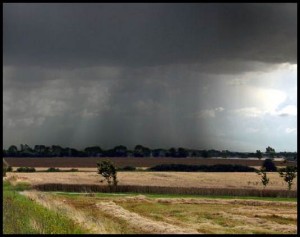About / EPIC

Environmental Policy Integrated Climate (EPIC) Model
Environmental Policy Integrated Climate (EPIC) model is a cropping systems model that was developed to estimate soil productivity as affected by erosion as part of the Soil and Water Resources Conservation Act analysis for 1980, which revealed a significant need for improving technology for evaluating the impacts of soil erosion on soil productivity. EPIC simulates approximately eighty crops with one crop growth model using unique parameter values for each crop. It predicts the effects of management decisions on soil, water, nutrient, and pesticide movements, and their combined impact on soil loss, water quality, and crop yields for areas with homogeneous soils and management.
Capabilities
EPIC functions on a daily time step and can simulate hundreds of years. Since the initial development, EPIC has been continually improving through the additions of algorithms to simulate water quality, nitrogen and carbon cycling, climate change, and the effects of atmospheric carbon dioxide. The processes simulated include leaf interception of solar radiation; conversion to biomass; division of biomass into roots, above ground mass, and economic yield; root growth; water use; and nutrient uptake. It can be configured for a wide range of crop rotations and other vegetative systems, tillage systems, and other management practices. The model can also assess the cost of erosion for determining optimal management strategies.
Examples of EPIC applications include assessments of:
- relative comparisons between different erosion class soils
- erosion losses and erosion impacts on crop productivity
- effects of different nutrient treatments
- surface runoff and leaching of nitrogen and phosphorous losses from fertilizer and manure applications
- leaching and runoff from pesticide applications
- soil erosion losses from wind erosion
- climate change and drought impacts on crop yield and soil erosion
- development of agricultural management practices that are effective at sequestering soil carbon
- sediment and nutrient losses as a function of different tillage systems, crop rotations, and fertilizer rates
- impacts of different irrigation amounts and timings
- economic-environmental analyses in response to alternative cropping systems, management practices, and other scenarios
- nutrient and pesticide movement estimates for alternative farming systems for water quality analysis
